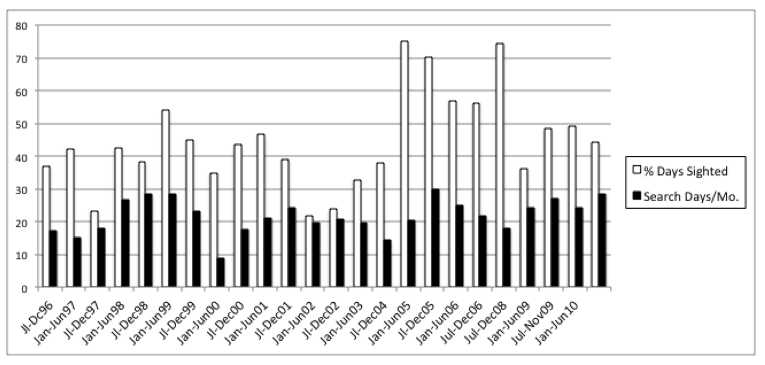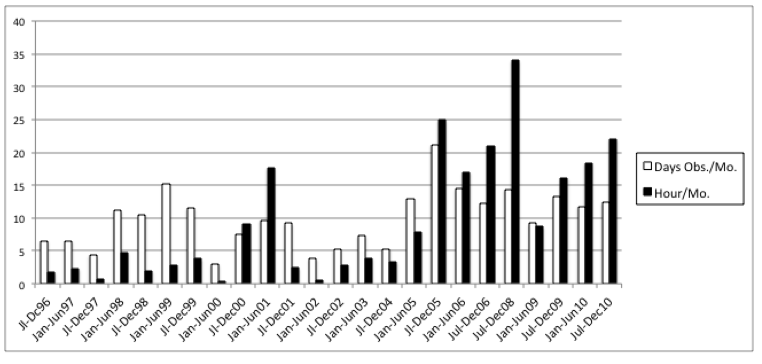Habituation
In August of 2011 SCP staff found chimpanzees 13 days a month and we observed chimpanzees for a total of 20 hours a month. We have still not achieved an important milestones in the chimpanzee habituation business, the ‘nest-to-nest follo,’ the unbroken obseration of an individual for the 12-13 hours from the time they leave their nest until the enter their nest that night. This mileston is so significant not just because an individual allowing this sort of extended observation means they are comfortable around humans, but also because when observers break off contact with the chimpanzees, it may be days before they find them again. Staying with them until they rest for the night means researchers can find them easily the next day. When trackers have not 'nested' a chimpanzee, they must systematically search the trail grid hoping to stumble upon an individual, or they must locate a feeding party when it vocalizes. If the party is silent and more than a few meters from the trail grid, discovery can be difficult. Since chimpanzees often nest in groups, nesting an individual means the next day's observations can begin on a different individual. With the increased proximity to humans entailed by a 12-13 hour follow, and with the increased number of follows, habituation can improves quickly when there are nest-to-nest follows, as the unbroken chain of observations builds on itself.
On July 13, 2009 Prof. Hunt and APD Hirschauer worked in tandem to follow a feeding party for 10 hours, losing them only two hours before nesting. On March 28, 2010 APD Deimel came within a hairs-breadth of the nest-to-nest follow, logging 11 hours and following an individual from 7:15 to 6:05. We expect a nest-to-nest almost any day.



